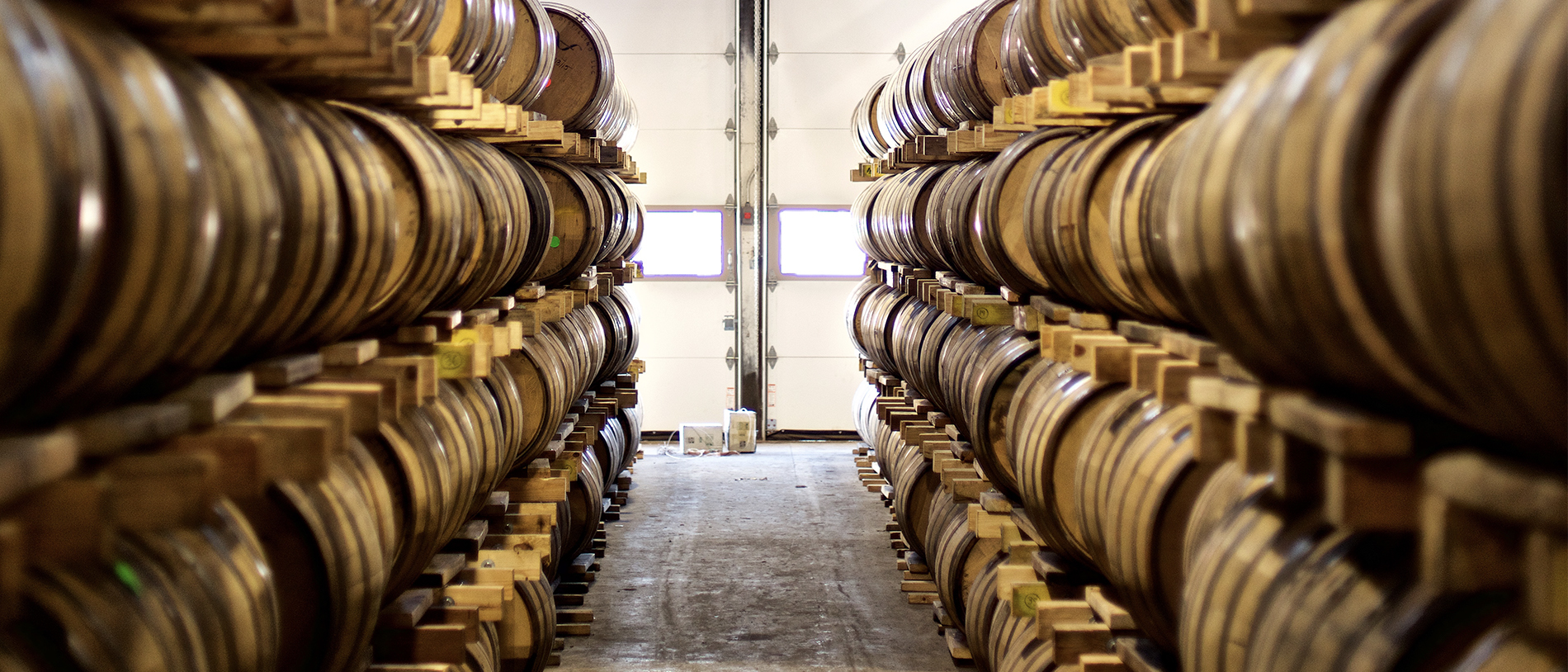 How do you prefer your bourbon profile? Do you like more spice or softer notes like vanilla? Do you prefer hints of fruit or notes of flavor from cereal grains? Do you enjoy bold cocktails, or elegant single-barrel whiskey on the rocks?
How do you prefer your bourbon profile? Do you like more spice or softer notes like vanilla? Do you prefer hints of fruit or notes of flavor from cereal grains? Do you enjoy bold cocktails, or elegant single-barrel whiskey on the rocks?
While proof plays a huge role in all of the above, a large chunk of a bourbon’s flavor profile comes from two primary flavor grains – rye and wheat. Maximizing your bourbon flavor palette requires only a small bit of knowledge about how it’s crafted.
Bourbon enthusiasts know that straight bourbon production requires at least 51% of the mash bill to come from corn. The other 49% is made up of other grains including rye, wheat, malted barley or more rarely, other grains including oats or amaranth. There is no legal definition for “high rye” Bourbons but, conventional wisdom suggests that anything over 20% deserves the moniker of “high rye.” When making bourbon, malted barley adds a little extra flavor, and it’s essential for delivering enzymes that free up fermentable sugars that are hidden inside corn, wheat and rye whiskey.
Whiskey Grains Breakdown
For those unfamiliar with straight bourbon, there are many different grains that make up the flavor profile that comes from the extra 49% left in mash bills. Before getting into the difference between high-rye bourbon and more typical mashbills of 12-15% rye, we’ll give you a breakdown of the most commonly used grains to familiarize yourself with the production process.
Malted Barley
We’ll begin with traditional single malts. Historically speaking, Scotland and Ireland produce single malt whiskeys, as well as Japan and Australia. Regardless of their origin, the common thread here is that they are all made entirely from barley (American single malt whiskeys only require 51% barley).
When comparing a light single malt from Scotland and a Japanese single malt, you’ll see that they all share a roasty, toffee-flavored note. Of course, you can find additional flavors and textures as other production methodologies and environmental factors come into play. However, they both share that benchmark flavor characteristic.
Corn Whiskey
Whiskeys labeled as “corn whiskey” are mashed from a minimum of 80% corn, and they can be aged only in used barrels, or are bottled completely unaged. With these whiskeys, you can definitely taste the influence of corn as there is little or no barrel flavors involved.
High-Rye Bourbons
In the past 20 years, more and more producers have turned to making “high rye” Bourbons, made with an increased amount of rye in the mash bill, perhaps 20% or more. They appeal to drinkers who need that extra bite of spice in their bourbon with less sweetness. The higher the rye content, the spicier the bourbon.
For those who need an introduction to high-rye bourbon, try a glass of our flagship New Riff Bottled in Bond Bourbon. Made with a generous 30% high-rye in the mashbill, this unequivocally high-rye Bourbon epitomizes the category, and provides powerful spicy clove and fruit notes alongside rich and honeyed oak thanks to four years aging in our warehouse.
Wheated Bourbons
Why do people go crazy over wheated bourbon? One of the things that distinguishes it from other bourbon is the wheat in the mash, which really does taste a bit like whole wheat bread with honey. However, you won’t need to drop a great amount of cash to taste a good wheat bourbon whiskey. Try our Maltster Bourbon with Malted Wheat for a great high-wheat bourbon.
The Maltster Bourbon with Malted Wheat is a project that explores different malted grains used in the old Bourbon recipe. The unique mash bill offers bold interpretations of traditional Bourbon styles with a darker and deeper version of wheated Bourbon.
From the opening aroma of our Malted Wheat Bourbon, there is shade of dark, husky grains to the whole production; yet it also drinks in a classical Bourbon fashion with plenty of oak. A splash of water releases a whiff of dark fruit. In the mouth, it enters large-scaled and full-bodied, tending to dryness. There’s plenty of oak but, behind that, lies that notion of dark fruit. A wood spice element tinges the finish, which grows on the taster precipitously.
High-Rye Bourbons
Another additional nuance that should be noted is whether a bourbon is considered “high-rye” bourbon. High-rye bourbons mean that there is more rye in the mashbill than normal. However, while one distiller might consider their mashbill of rye high, others might consider that same mash bill to be low.
Distilleries that choose high-rye end up with a whiskey with aromes that are extremely prevalent before you bring your nose to the glass. These aromas snake back outward and upward on the backs of alcohol vapors. High-rye bourbon whiskey produces aromas consisting of baking spices, fruit, grass and other flavors that reappear across the palette when sipped.
High-Wheat Bourbon or Wheated Bourbon
High Wheat Bourbon, more commonly known as “Wheated Bourbon,” is crafted using wheat in place of rye to produce a whiskey that has gentler aromas and a pleasant grassy-grainey note. To many, Wheated Bourbons tend to have smells that are reminiscent of the outdoors. When sipped, Wheated Bourbons can have flavor notes of earthy, minerally, and slightly sweet taste, with a smooth and soft texture as it is swallowed.
What’s the Difference?
To summarize the flavor profiles, high-rye bourbon is loud while wheated bourbon is somewhat tame. Both have their virtues and are worth tasting to see which is best suited for you.
